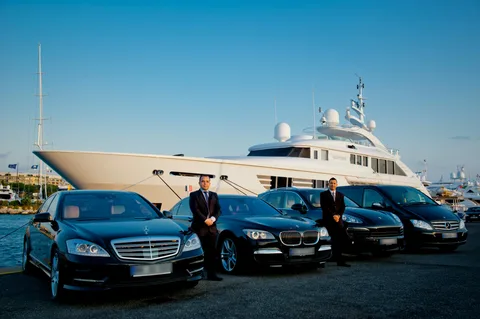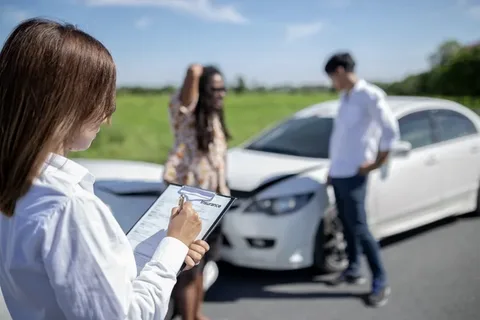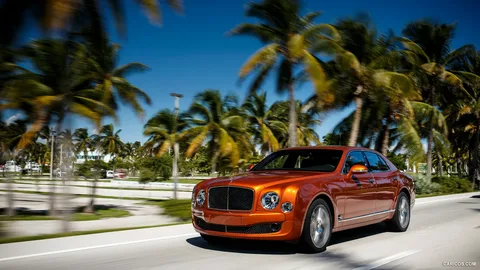2Own a high-end vehicle? Discover essential luxury car insurance tips in 2025—coverages, costs, insider strategies, and top insurers to protect your investment better.
1. Introduction: Why Insuring a Luxury Car Is Different
Driving a luxury vehicle—whether it’s a Mercedes‑Benz S-Class, Porsche 911, or Range Rover—comes with more than prestige. These vehicles bring higher replacement costs, repair complexity, and risk profiles unmatched by everyday cars. Insurance designed for budget sedans or subcompacts won’t suffice. As a discerning owner, you need coverage that reflects your vehicle’s value, features, and future.
This article dives into everything you need to know about luxury car insurance in 2025, from coverage essentials and repair considerations to cost-saving strategies and bespoke providers.
2. What Defines a Luxury Car—and What That Means for Insurance
2.1 Defining the Luxury Class
Luxury vehicles typically include:
- Brand prestige: Rolls-Royce, Bentley, Tesla Performance, BMW M, Audi RS, Ferrari
- High-end trims of mainstream brands: Cadillac CT6, Lexus LS, Infiniti QX80
- Sports and exotic cars: Lamborghini, McLaren, Aston Martin
2.2 Insurance Implications
Luxury cars generally command higher premiums due to:
- Elevated parts and labor costs
- Complex electronic systems
- Low production volumes leading to higher theft risk
- High performance and speed capacity—greater liability exposure
Recognizing these distinct characteristics helps you shape the right insurance policy.

3. Key Coverages for Luxury Vehicles
Standard auto policies include liability, collision, and comprehensive coverage. But luxury vehicles require extras:
3.1 Liability
Protects against bodily injury and property damage you cause. High-end cars require high limits ($500K+), since repair costs are steeper.
3.2 Collision
Repairs your vehicle after an accident. For exotics, factory repairs can cost tens of thousands, so collision coverage is essential.
3.3 Comprehensive
Covers non-collision damage (e.g., theft, vandalism, fire). Luxury cars have a higher value, so this is a must-have.
3.4 OEM Parts and Repairs
Ensure coverage requires OEM (Original Equipment Manufacturer) parts and certified mechanic labor—crucial for ADAS (adaptive cruise, lane assist), carbon-fiber panels, aluminum bodies, and more.
3.5 Agreed Value
Rather than declining depreciated payouts, agreed-value insurance locks in your car’s full value, ideal for limited-run, collectible, or antique luxury vehicles.
3.6 Gap Coverage
If you lease or loan, avoid being underwater post-loss—gap insurance pays off the difference between loan amount and actual cash value.
3.7 Rideshare Coverage
Luxury owners sometimes moonlight as drivers. If so, ensure you have rideshare endorsement (for Uber/Lyft), which covers the interval between app-off and driver-on duty.
3.8 Concierge Services / Roadside
Look for policies offering premium roadside assistance—towing to trusted mechanics and services like trip interruption, tire change, and fuel delivery.
4. Average Luxury Car Insurance Rates in 2025
4.1 Across the U.S.: What to Expect
Insurance rates vary by model and region, but typical full-coverage annual premiums are:
- Porsche Macan: ~$1,200–1,600
- Range Rover Sport: $1,400–1,800
- Tesla Model S Performance: $1,600–2,200
- Mercedes-Benz S-Class: $1,800–2,500
- Exotic Ferrari or McLaren: $3,000–4,500+
4.2 Factors Influencing Rates
- Vehicle value and repair costs
- Driver age, record, and credit
- Location (urban higher repair/theft risk vs rural)
- Deductible and coverage limits
- Usage (personal vs rideshare or business)
- Safety equipment and anti-theft features
5. Luxury Insurance Companies to Consider
5.1 Chubb
- Known for holistic claims service
- Global moving coverage and OEM repairs
- Agreed-value, replacement cost, classic car support
5.2 Zurich Private Client
- Elite underwriting for globals and collectors
- Replacement cost coverage and chauffeur liability
- Estate-level service and coverage modules
5.3 Progressive & GEICO (with endorsements)
- OEM parts and glass replacement available
- Lower base rates and broad national availability
- Supplemental rideshare and classic-add-on riders
5.4 USAA (if eligible)
- Military-only but top-rated for premium and service
- Offers OEM coverage package, performance equipment coverage
5.5 Allianz/Assurant
- Custom policies for rare or exotic vehicles
- Agreed-value, restoration coverage, storage protection
5.6 Hagerty (Collectors)
- Agreed-value collector coverage
- Spare parts coverage and mile-based endorsements
- Ideal for low-use vintage or exotic collections
6. Money-Saving Tactics Without Sacrificing Value
6.1 Shop and Compare Annually
Market rates shift yearly—never renew without comparing quotes.
6.2 Bundle with Other Assets
Combine auto with homeowner’s, umbrella, or other carrier policies for discounts.
6.3 Choose Higher Deductibles
$1,000 or $2,500 deductibles can reduce premiums 10–20%; ensure you can pay them if needed.
6.4 Use Telematics & Low-Mileage Tracks
Apps from Progressive or GEICO can lead to 10–30% savings if you drive carefully.
6.5 Install Anti-Theft Devices
Factory alarms, GPS trackers, VIN etching—save 5–15% on comprehensive premiums.
6.6 Limit Rideshare Use
Declaring occasional commercial activity may cost more—only opt for rideshare coverage when truly in use.
6.7 Maintain a Clean Driving Record
Tickets and claims raise your risk rating. Safe driving avoids rate surcharges.
6.8 Secure Parking & Garage Storage
Insurers often reward garages that reduce exposure to theft and damage.
7. Claims: What Happens After an Accident
7.1 Reporting Damage
Contact your insurer immediately. For OEM repairs, request certified luxury repair centers.
7.2 Parts Replacement
Confirm delivery of factory parts—not aftermarket—with dealer or manufacturer order forms.
7.3 ADAS Calibration
Advanced systems require calibration after even minor repairs—covered in luxury clauses.
7.4 Vehicle Towing
Expect premium roadside towing and specialized transport to designated repair facilities.
7.5 Total Loss Scenarios
With agreed-value or replacement cost policies, payouts reflect your vehicle’s insured worth.
7.6 Exotic / Collector Cases
Salvage rebuild support, specialty parts shipping, and worldwide transport may be required.
8. Case Studies: Different Luxury Scenarios
8.1 Daily-Driven Tesla Model 3
- Coverage: OEM parts, rideshare add-on if applicable
- Deductible: $1,000 collision/comprehensive
- Telematics: safe-driving app for discount
- Estimated Premium: $1,200–1,500/year
8.2 Weekend-Only Porsche Cayman
- Agreed-value $70K
- Pay-per-mile / storage endorsement
- Classic-owner add-ons (track option removed)
- Premium: $600–900/year
8.3 Family Range Rover
- Full coverage with gaps
- OEM equipment, glass, roadside
- Garage parking discount
- Premium: $1,500–2,300/year
8.4 Collector Ferrari 488
- Agreed-value $350K
- Low mileage, shipping included
- Spare-parts insurance
- Premium: $3,500–4,500/year
9. Safe Driving Features That Help Lower Rates
- Front/back collision warning
- Blind-spot detection
- Lane-keeping assist
- Backup cameras
- Factory alarm systems
- GPS locator integration
Such features often reduce comprehensive premiums by 10–20% in 2025.
ENVIROTECH NEWS UPDATES
10. Frequently Asked Questions (FAQs)
Q1: Do I need agreed-value coverage?
If your car is collectible, exotic, or has market volatility, yes—agreed-value ensures you’re covered at purchase or sale worth.
Q2: Are rideshare apps safe for luxury cars?
Only if you buy proper endorsement—it’s the only way to get coverage while waiting for or carrying riders.
Q3: How much deductible is best?
High deductibles lower premiums, but ensure you have funds to pay them in case of a claim.
Q4: Should I bundle policies?
Usually yes—bundling auto with home or umbrella often saves 15–25%. Make sure providers support OEM terms.
Q5: Will switching luxury insurers affect rate?
Rates depend on your driving and coverage—not loyalty. Always shop before renewal for better pricing.
Q6: Is gap insurance worth it for financed luxury cars?
Yes. Depreciation is fast on luxury vehicles, so gap coverage prevents you from owing more than the car worth.
11. Checklist: Insuring a Luxury Vehicle
- Choose insurer with OEM parts, certified repairs, and agreed-value options
- Shop around: compare Chubb, Zurich, Progressive, USAA, Allianz, Hagerty
- Set Liability: min $500K–1M bodily and property
- Elect deductible: $1,000–2,500 collision/comprehensive
- Add gap, OEM parts, rideshare (if needed)
- Opt for telematics / anti-theft discounts
- Store carefully—garage or secure location
- Track safe driving and renew annually
Maintaining discipline ensures full use of both coverage and premium savings.

12. Trends Shaping 2025 Luxury Auto Insurance
- OEM-only repairs: Growing enforcement from manufacturers
- Telematics: Usage-based insurance for palace drivers
- Suppliers increasing supply: New territories mean faster, cheaper repairs
- Agreed-value innovation: AI-driven tooling automates value setting
- Electric luxury rise: New options for EV-specific coverage at competitive rates
Staying ahead will help you save and stay fully protected.
13. Luxury Insurance Buyer’s Mindset
- You’re insuring prestige, not just metal
- Cover quality matters more than price
- Choose insurers who treat you and your vehicle with care
- Stay informed on features, recalls, and aftermarket changes
With knowledge and diligence, insurance transforms from cost to strategic protection.
Conclusion
Protecting your luxury vehicle in 2025 requires intentional selection of coverage—one that includes OEM parts, agreed-value or replacement cost options, rideshare endorsement (if needed), and high liability limits. Bundling, telematics, and deductible strategies can substantially offset premiums. Most importantly, choose insurers who understand luxury cars, offer white-glove service, and treat your ride with respect.
Whether you’re behind the wheel of a grand touring sedan, high-performance rocket, or weekend supercar, your insurance should match its value—not just in dollars but in service and peace of mind.
